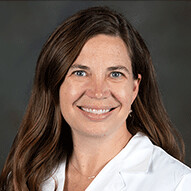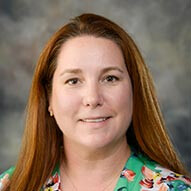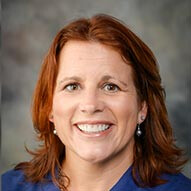Fractures in children
A fracture is a partial or complete break in the bone. It occurs when a bone is subjected to more force than it can absorb – typically from a fall, or trauma, or a direct blow to the body.At the Children’s Health℠, our pediatric orthopedic specialists have extensive training to diagnose and treat bone fractures with advanced, effective techniques that support your child’s skeletal growth and development
What are fractures?
Fractures vary from mild cases where surgical treatment is not required to more serious cases where it is.
The good news is that fractures in children tend to heal fast. The younger your child, the faster healing will occur. That’s because children’s bones are still growing, which makes them softer and more flexible. Their bones will buckle or bend before completely breaking. Still, forces applied to bones can be too strong, and the bones will indeed sometimes break, requiring medical treatment.
What are the different types of fractures?
Incomplete fractures - Most fractures in children are incomplete fractures, with the bone cracking or only partially breaking.
Buckle or torus fracture - Also know as an impacted fracture, it involves one side of the bone buckling on itself without breaking the other side.
Greenstick fracture - The bone is bent, with a crack on one side but intact on the other – similar to how a stick from a tree branch looks when you try to bend and break it.
Complete fractures - As bones mature, complete bone fractures — where the bone breaks into two or more pieces — are more likely.
Closed fracture (simple fracture) - The bone breaks clean but doesn’t damage surrounding tissue or puncture the skin. Simple fractures can usually be treated with nonsurgical procedures such as realigning and casting.
Simple fractures include:
Oblique - A diagonal break across the bone
Transverse - A straight-line break across a bone
Spiral - The breakage spirals around the bone (often from a twisting injury)
Open fracture (complex fracture) - The bone breaks — sometimes into fragments— and damages the surrounding tissue, with possible tears through the skin. Complex fractures are more serious and may require surgery.
Non-displaced fracture - The broken bone segments line up easily.
Displaced fracture - The broken bone pieces are out of alignment and may require surgery to realign.
Other common pediatric fractures
Growth plate fracture - Growth plates are the areas in children’s bones where growth happens. These areas are weak and more likely to fracture. Our physicians are extensively trained to treat growth plate fractures, ensuring that your child’s injured bone continues to grow and develop normally. Learn more about growth plate injuries.
Stress fracture (hairline fracture) - Tiny, hairline cracks form in the bone, usually caused by overuse or repetitive force in sports such as track and field or cross country running.
Compression fracture - Where the bone is crushed, causing the broken portion to be wider or flatter in appearance
Comminuted fracture - The bone breaks into several pieces, often requiring surgery.
What are the signs and symptoms of a fracture?
The most common fracture symptoms include pain and/or swelling and obvious deformation in the injured area (accompanied by warmth, bruising or redness), and difficulty using or moving the injured area in normal fashion.
Common fracture symptoms include:
Difficulty using, moving or bearing weight on the injured area
Deformity in the injured area such as the bone puncturing the skin
Pain
Swelling
Bruising
How are fractures in children diagnosed?
At Children’s Health, our orthopedic physicians will examine your child, assess pain and use imaging to diagnose the problem. Our physicians use the latest in diagnostic technology to develop a comprehensive treatment plan which can often diagnose a fracture with just a physical exam and an X-ray.
Diagnostic testing may include:
X-ray - Uses invisible electromagnetic energy beams to take detailed images of bones
CT (computed tomography) scan - Uses X-rays to make detailed images of the injured area
MRI (magnetic resonance imaging) scan - Uses magnetic fields and radio waves to take detailed pictures of the injured area
Bone scans - Uses a small amount of radioactive substance to make detailed images of the affected bones
What are the causes of fractures in children?
Fractures occur when more force is applied to the bone than it can absorb. Fractures are typically caused by falls or trauma, or a direct hit to the body.
Risk factors
Fracture risks increase during adolescence, with the arms being the most common fracture location.
Risk factors for fractures include:
Age: As teens approach adulthood, their risk for fractures increases.
Gender: Boys are more likely than girls to break bones
Poor nutrition, including lack of calcium
Previous history of fractures
How are fractures in children treated?
At Children’s Health, our treatment goals for your child include controlling pain, promoting the healing process, preventing complications and restoring the normal use of the fractured area.
We offer the full range of treatments for fractures. After diagnosis, your physician will consult with you and then recommend the best approach for your child. Treatment options depend on the nature of the fracture and your child’s age and skeletal development.
Treatment options may include:
Medication - To help manage pain and prevent infection
Splints - Used for minor fractures where the bone needs minimal support to heal
Casts - Used when immobilization is needed for healing and recovery, and are typically made of plaster or fiberglass and can be waterproof
Closed reduction - Non-surgical procedure for displaced fractures that manually realigns the bones
Surgery - For complex fractures that require metal rods or pins to hold bone fragments in place
Fracture doctors and providers
 Dustin Loveland, MDSurgical Director and Chief of Orthopedics and Sports Medicine
Dustin Loveland, MDSurgical Director and Chief of Orthopedics and Sports Medicine Karl Rathjen, MDPediatric Orthopedic Surgeon
Karl Rathjen, MDPediatric Orthopedic Surgeon Alexandra Callan, MDPediatric Orthopedic Surgeon
Alexandra Callan, MDPediatric Orthopedic Surgeon Amy McIntosh, MDPediatric Orthopedic Surgeon
Amy McIntosh, MDPediatric Orthopedic Surgeon Kathryn Bauer, MDOrthopedic Sports Medicine Surgeon
Kathryn Bauer, MDOrthopedic Sports Medicine Surgeon Alvin Chi, MDSports Medicine Physician
Alvin Chi, MDSports Medicine Physician Christopher Redman, MDOrthopedic Sports Medicine Surgeon
Christopher Redman, MDOrthopedic Sports Medicine Surgeon John Roaten, MDOrthopedic Sports Medicine Surgeon
John Roaten, MDOrthopedic Sports Medicine Surgeon Jacob Sexton, MDSports Medicine
Jacob Sexton, MDSports Medicine James Pace, MDOrthopedic Sports Medicine Surgeon
James Pace, MDOrthopedic Sports Medicine Surgeon Emily Davenport, PA-CPhysician Assistant - Orthopedics
Emily Davenport, PA-CPhysician Assistant - Orthopedics Brian Gutknecht, PA-CPhysician Assistant - Orthopedics
Brian Gutknecht, PA-CPhysician Assistant - Orthopedics Kaitlyn McCurley, PA-CPhysician Assistant - Orthopedics
Kaitlyn McCurley, PA-CPhysician Assistant - Orthopedics Shellye Crawford, APRN, PNP-PCNurse Practitioner - Orthopedics
Shellye Crawford, APRN, PNP-PCNurse Practitioner - Orthopedics Linda Grande, APRN, PNP-PCNurse Practitioner - Orthopedics
Linda Grande, APRN, PNP-PCNurse Practitioner - Orthopedics Nathan Nolte, APRN, PNP-PCNurse Practitioner - Orthopedics
Nathan Nolte, APRN, PNP-PCNurse Practitioner - Orthopedics Nicholas Strittmatter, APRN, FNPNurse Practitioner - Orthopedics
Nicholas Strittmatter, APRN, FNPNurse Practitioner - Orthopedics Lori Thornton, APRN, FNPNurse Practitioner - Orthopedics
Lori Thornton, APRN, FNPNurse Practitioner - Orthopedics